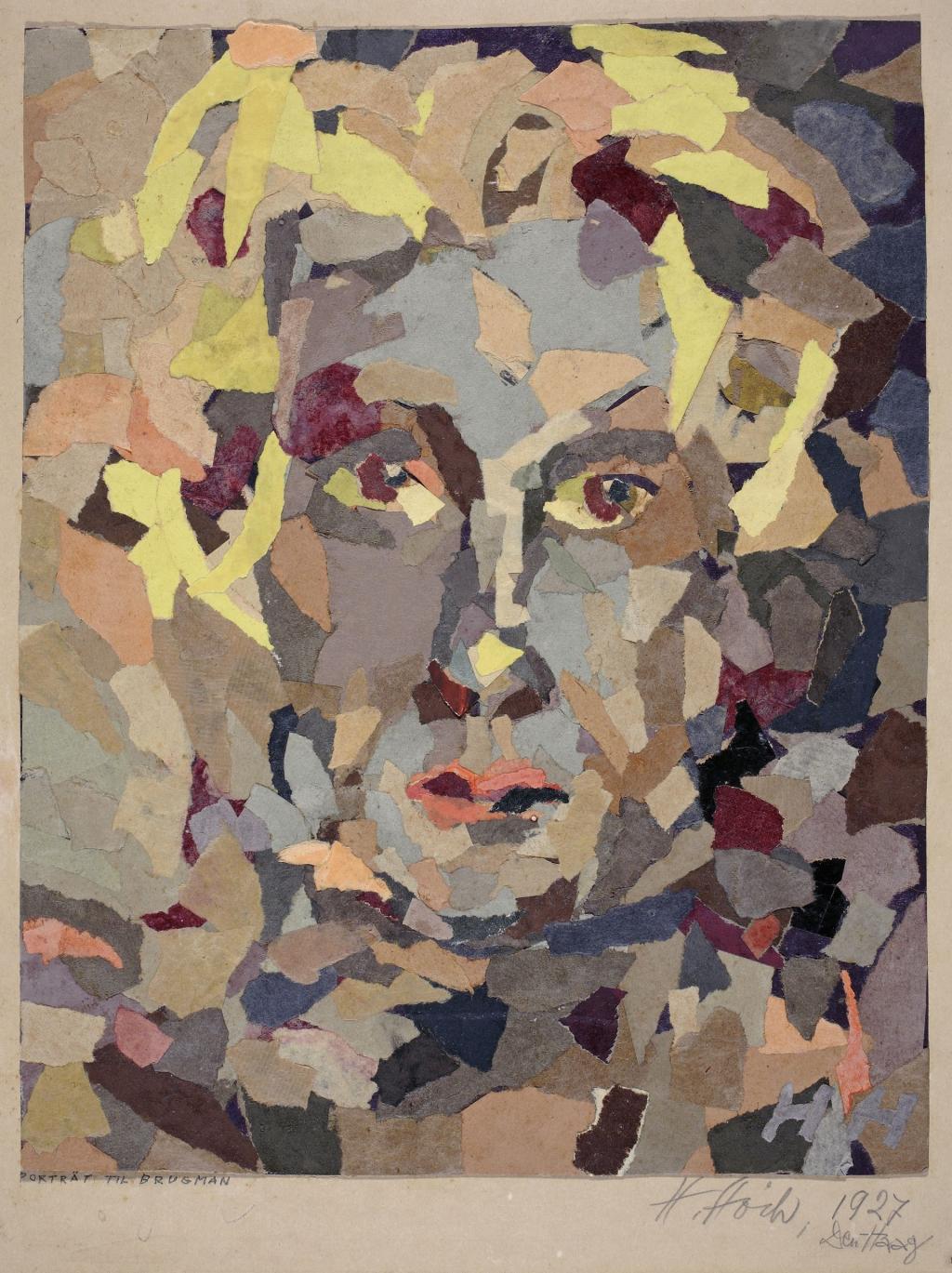Til Brugman

The RKD houses a beautifully produced edition of Til Brugman's sound poems, 5 klankgedichten (5 sound poems), published posthumously in 1981 in an edition of 97 copies. Til Brugman did not manage to publish her sound poems during her lifetime. She is remembered more for the role she played in the lives of other famous artists than for her own literary achievements.
5 sound poems
Between 1917 and 1922 Til Brugman, inspired by the artists around her, produced several sound poems in which content was secondary to sound, rhythm and form. Her poems are based on the principles of De Stijl and show similarities with the visual poems, or ‘letterklankbeelden’, of I.K. Bonset, the alter ego of Theo van Doesburg. In 1923 Van Doesburg published Brugman’s sound poem R in De Stijl, commenting: ‘The starting point is the substance of the words themselves, without there being a direct association with a clearly perceptible subject. […] The result is a well-balanced whole which offers the tension of the words in their pure form with minimum material.’ In 1951 the poem was included in the De Stijl exhibition at the Stedelijk Museum in Amsterdam, but after this show Brugman’s sound poems sank into oblivion; that is, until the publication of 5 klankgedichten in 1981. It would have given the author great pleasure to see how much attention this collection received. The book was typeset by hand and the cover was printed in two colours using a hand press, on rag paper called Zaansch Bord.

Correspondence
Til Brugman initially made a living through writing as a business clerk. Being something of a linguistic genius she later provided private tuition in a variety of foreign languages. Besides the more familiar languages, she had a thorough command of Russian, Japanese as well as several Scandinavian languages. In 1908 she met Piet Mondriaan at a dance class in Amsterdam and the two struck up a friendship. Through Mondrian she came into direct contact with other De Stijl artists and she took on various duties for the magazine, including administration of the membership. In addition, she organised exhibitions and acted as intermediary in the sale of works by Mondrian, El Lissitzky, Kurt Schwitters, Hans Arp and others.
Brugman’s place as an artist within De Stijl may have fallen short of her own expectations, but she certainly played a connecting role. Her enthusiasm for modern art brought her into contact with famous artists, as emerges from her extensive (foreign) correspondence. These letters give a nice glimpse into the world of avant-garde artists, the emergence of modern art in the Netherlands, and the interaction with modern art movements abroad. Brugman’s archive, which is part of the RKD collections, contains a postcard from Nelly van Doesburg dated April 1923, in which she writes ‘Dear Til, We forgot to bring the De Stijl records with us, fortunately we have the old book here, so we only need the new subscriptions. Would you be so kind as to send us a list of subscriptions added by you, also for Mécano !….. You can send it to Mondrian in Paris, Rue de Départ 26 As soon as possible!’






Personal life
Brugman’s correspondence also provides a good deal of information about her personal life. She had a strong personality, she was candid about being a lesbian and wore her heart on her sleeve, something that not everyone appreciated. In 1917 she moved to The Hague to set up home with the singer Sienna Masthoff. Their interior featured sculptures and paintings by artist friends such as Mondrian, Schwitters and Lissitzky. In 1923 Brugman invited both Theo van Doesburg and the Hungarian artist Vilmos Huszár to design an interior for one of the rooms in her house. Sienna’s music room was transformed by Huszár into a modernist space with planes of colour on the walls and with new furniture designed by Gerrit Rietveld. The photograph reveals that Brugman was no purist and gave the interior a personal touch that was distinctly practical: to improve the comfort of the white Rietveld chair she added a pair of small cushions; the side table, also designed by Rietveld, has a vase of flowers standing on a doily. Basking in the bright sunlight to the right is Hannah Höch’s cat Ninn.
Til Brugman met the German Dadaist Hannah Höch in 1926 through Kurt Schwitters. Both women were part of the experimental international avant-garde and were in close contact with the artists of De Stijl and Dada. They had a relationship and lived together for more than nine years, first in the Netherlands and, from 1929, in Berlin. It was under Höch’s influence that Brugman began to write grotesks, a popular genre among Dadaists. These short absurdist tales are a combination of realism but also fantasy: they are funny and serious at the same time. The couple separated in 1936.






In 1939 Brugman returned to the Netherlands, together with her new girlfriend Hans Mertineit-Schnabel. The two found an apartment in the Amsterdam Rivierenbuurt area, but during the German occupation they gave help to Jews and members of the resistance and were forced to leave. They went into hiding in the village of Breukelerveen. From 1948 they lived in Reeuwijk where they survived on the meagre proceeds of Brugman’s publications and translations. In the 1950s Brugman published a few novellas and novels as well as children’s books. Over the years she wrote more than 300 grotesks, the majority of which remained unpublished. In 1952 she received the Marianne Philips Prize for her entire output. When she ran out of money in the 1950s, she was forced to sell a large part of her art collection of works by Mondrian, Schwitters and Lissitzky. She died in 1958, aged 69, after an eventful and very individual life.
